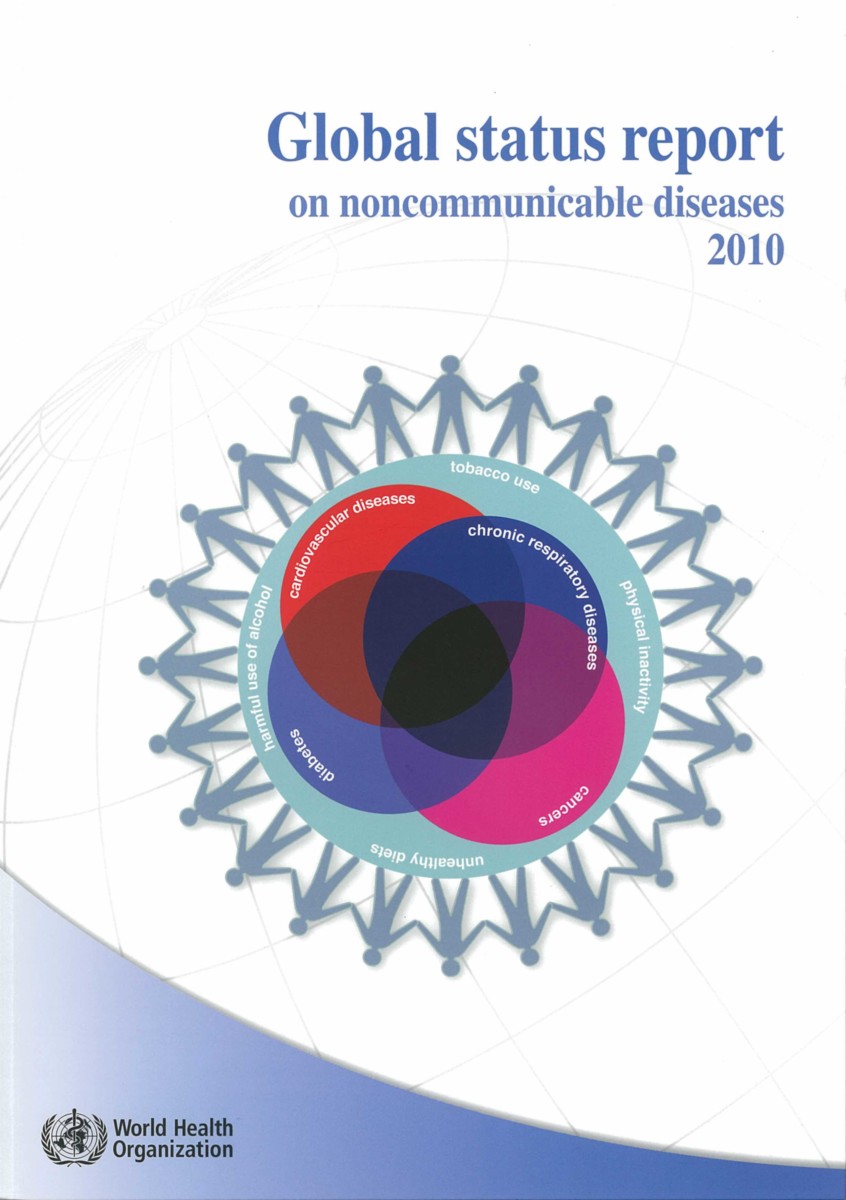Report on Noncommunicable Diseases and Their Impact on Sustainable Development Goals
Executive Summary
Noncommunicable diseases (NCDs) represent a significant global health challenge and a major impediment to achieving the 2030 Agenda for Sustainable Development. In 2021, NCDs were responsible for 43 million deaths, accounting for 75% of non-pandemic-related global fatalities. The disproportionate impact on low- and middle-income countries, where 82% of premature NCD deaths occur, directly threatens progress on key Sustainable Development Goals (SDGs), particularly SDG 3 (Good Health and Well-being), SDG 1 (No Poverty), and SDG 10 (Reduced Inequalities). This report outlines the scale of the NCD crisis, its primary risk factors, and the strategic interventions required to mitigate its impact and advance the global development agenda.
The Global Burden of NCDs and Its Relation to SDG 3
NCDs, or chronic diseases, are long-duration conditions resulting from a combination of genetic, physiological, environmental, and behavioural factors. Their prevalence poses a direct challenge to SDG Target 3.4, which aims to reduce premature mortality from NCDs by one-third by 2030.
Key Mortality Statistics
- Global Deaths: NCDs caused 43 million deaths in 2021.
- Premature Deaths: 18 million individuals died from an NCD before the age of 70 in 2021.
- Geographic Disparity: Low- and middle-income countries account for 73% of all NCD deaths and 82% of premature NCD deaths, highlighting a critical challenge for SDG 10 (Reduced Inequalities).
- Primary Disease Groups: Four main groups account for over 80% of all premature NCD deaths:
- Cardiovascular diseases (19 million deaths)
- Cancers (10 million deaths)
- Chronic respiratory diseases (4 million deaths)
- Diabetes (over 2 million deaths)
Risk Factors: A Barrier to Multiple SDGs
The risk factors for NCDs are intrinsically linked to broader development challenges, affecting progress across several SDGs beyond health.
Behavioural and Metabolic Risk Factors
Modifiable behaviours and their metabolic consequences are the primary drivers of NCDs. Addressing them is crucial for achieving sustainable development.
- Behavioural Risks: These include tobacco use, unhealthy diets, harmful use of alcohol, and physical inactivity. Promoting healthy lifestyles supports not only SDG 3 but also SDG 2 (Zero Hunger) through better nutrition and SDG 11 (Sustainable Cities and Communities) by creating environments that encourage physical activity.
- Metabolic Risks: These include raised blood pressure, overweight/obesity, high blood glucose, and abnormal blood lipids. Elevated blood pressure is the leading metabolic risk factor, responsible for 25% of global NCD deaths.
Environmental Risk Factors
Environmental factors, particularly air pollution, are a major contributor to the NCD burden. This links the fight against NCDs to environmental sustainability goals.
- Air Pollution: As the largest environmental risk, air pollution contributes to 5.6 million NCD-related deaths annually from conditions like stroke, heart disease, and lung cancer. This underscores the need for integrated action on SDG 3, SDG 7 (Affordable and Clean Energy), and SDG 11 (Sustainable Cities and Communities).
Socioeconomic Impact and the 2030 Agenda
NCDs create a vicious cycle of poverty and ill-health that actively undermines progress towards the SDGs.
Impediments to Poverty Reduction and Equity
- Poverty (SDG 1): The high cost of healthcare associated with NCDs can be catastrophic for households, impeding poverty reduction initiatives, particularly in low-income countries.
- Inequality (SDG 10): Socially disadvantaged populations are more exposed to risk factors and have less access to health services, leading them to become ill and die sooner. This exacerbates existing inequities.
Strategic Interventions for NCD Control and SDG Achievement
A comprehensive, multi-sectoral approach is essential to control NCDs and achieve related SDG targets.
Prevention and Management
- Reduce Risk Factors: Governments must implement low-cost, high-impact solutions to reduce modifiable risk factors. This requires collaboration across sectors like finance, transport, education, and agriculture, embodying the spirit of SDG 17 (Partnerships for the Goals).
- Strengthen Health Systems (SDG 3): Investing in the management of NCDs through a primary healthcare approach is critical. This includes strengthening early detection, screening, and treatment to reduce the need for more expensive care later. Universal access to essential NCD interventions is a cornerstone of achieving SDG Target 3.4.
Global Response and Commitment to SDG Target 3.4
The international community, led by the World Health Organization (WHO), recognizes NCDs as a fundamental challenge to sustainable development.
WHO Leadership and Global Action
- SDG Target 3.4: The 2030 Agenda includes a commitment to reduce premature NCD mortality by one-third. WHO plays a key leadership role in coordinating the global effort to achieve this target.
- Implementation Roadmap 2023–2030: The WHO has extended its Global Action Plan and developed a roadmap to accelerate progress. This plan supports actions to achieve nine global targets focused on the prevention and management of NCDs, directly contributing to the realization of the 2030 Agenda.
Analysis of the Article in Relation to Sustainable Development Goals
1. Which SDGs are addressed or connected to the issues highlighted in the article?
-
SDG 3: Good Health and Well-being
- The entire article is centered on noncommunicable diseases (NCDs), which are a primary global health challenge. It discusses mortality rates, risk factors (tobacco, alcohol, diet, air pollution), and the need for prevention, treatment, and healthcare systems, all of which are core components of SDG 3. The article explicitly mentions “SDG target 3.4” as a key goal.
-
SDG 1: No Poverty
- The article establishes a direct link between NCDs and poverty. It states, “Poverty is closely linked with NCDs” and that the rise in NCDs is predicted to “impede poverty reduction initiatives in low-income countries, particularly by increasing household costs associated with health care.” This highlights how health issues can trap households in poverty, connecting the topic directly to SDG 1.
-
SDG 10: Reduced Inequalities
- The article emphasizes the disproportionate impact of NCDs, stating that “82% of these premature deaths occur in low- and middle-income countries” and that “Vulnerable and socially disadvantaged people get sicker and die sooner than people of higher socio-economic positions.” This focus on the unequal burden of disease between and within countries connects the issue to the goal of reducing inequalities.
2. What specific targets under those SDGs can be identified based on the article’s content?
-
Target 3.4: By 2030, reduce by one third premature mortality from non-communicable diseases through prevention and treatment and promote mental health and well-being.
- This target is explicitly mentioned multiple times. The article states the 2030 Agenda includes “a target of reducing the probability of death from any of the four main NCDs between ages 30 and 70 years by one third by 2030” and that WHO is working to achieve “Sustainable Development Goals target 3.4.”
-
Target 3.5: Strengthen the prevention and treatment of substance abuse, including narcotic drug abuse and harmful use of alcohol.
- The article identifies the “harmful use of alcohol” as one of the key behavioral risk factors that “increase the risk of dying from an NCD.” Addressing this risk factor is essential for NCD prevention and directly aligns with this target.
-
Target 3.8: Achieve universal health coverage, including financial risk protection, access to quality essential health-care services and access to safe, effective, quality and affordable essential medicines and vaccines for all.
- This target is implied when the article discusses the need for “detection, screening and treatment of NCDs,” access to palliative care, and strengthening early detection through a primary healthcare approach. It explicitly notes that “Countries with inadequate health care coverage are unlikely to provide universal access to essential NCD interventions.”
-
Target 3.9: By 2030, substantially reduce the number of deaths and illnesses from hazardous chemicals and air, water and soil pollution and contamination.
- The article identifies “air pollution – indoor and outdoor” as the largest environmental risk factor, “accounting for 6.7 million deaths globally, of which about 5.6 million are due to NCDs.” This directly links the reduction of air pollution to the prevention of NCDs and aligns with this target.
-
Target 3.a: Strengthen the implementation of the World Health Organization Framework Convention on Tobacco Control in all countries, as appropriate.
- The article lists “tobacco use (including the effects of exposure to second-hand smoke)” as a primary behavioral risk factor for NCDs. Efforts to control NCDs, as promoted by WHO, inherently involve implementing this convention.
3. Are there any indicators mentioned or implied in the article that can be used to measure progress towards the identified targets?
-
Indicator for Target 3.4 (Indicator 3.4.1): Mortality rate attributed to cardiovascular disease, cancer, diabetes or chronic respiratory disease.
- The article directly refers to the metric of this indicator by discussing the goal to reduce “the probability of death from any of the four main NCDs between ages 30 and 70 years.” It provides baseline data, such as “18 million people died from an NCD before age 70 years” in 2021, which is the exact type of data used for this indicator.
-
Indicator for Target 3.9 (Indicator 3.9.1): Mortality rate attributed to household and ambient air pollution.
- The article provides a specific statistic that serves as this indicator: “Air pollution… accounting for 6.7 million deaths globally, of which about 5.6 million are due to NCDs, including stroke, ischaemic heart disease, chronic obstructive pulmonary disease, and lung cancer.” This quantifies the mortality burden from air pollution.
-
Indicators for Risk Factors (related to Targets 3.4, 3.5, 3.a): Prevalence of risk factors.
- The article implies the use of several indicators by identifying key modifiable risk factors. Progress would be measured by tracking:
- Prevalence of tobacco use (Indicator 3.a.1): Mentioned as a key behavioral risk factor.
- Harmful use of alcohol (Indicator 3.5.2): Also listed as a key behavioral risk factor.
- Prevalence of raised blood pressure/hypertension: The article calls this “the leading metabolic risk factor globally,” to which “25% of global NCD deaths are attributed.”
- Prevalence of overweight/obesity: Mentioned as a key metabolic risk factor contributing to NCDs.
- The article implies the use of several indicators by identifying key modifiable risk factors. Progress would be measured by tracking:
4. SDGs, Targets and Indicators Table
| SDGs | Targets | Indicators (Mentioned or Implied in the Article) |
|---|---|---|
| SDG 3: Good Health and Well-being | Target 3.4: Reduce by one third premature mortality from NCDs. |
|
| SDG 3: Good Health and Well-being | Target 3.9: Substantially reduce deaths and illnesses from air pollution. |
|
| SDG 3: Good Health and Well-being | Target 3.5: Strengthen prevention and treatment of substance abuse, including harmful use of alcohol. |
|
| SDG 3: Good Health and Well-being | Target 3.a: Strengthen the implementation of the WHO Framework Convention on Tobacco Control. |
|
| SDG 3: Good Health and Well-being | Target 3.8: Achieve universal health coverage. |
|
| SDG 1: No Poverty | (Implied) Targets related to poverty reduction. |
|
| SDG 10: Reduced Inequalities | (Implied) Targets related to reducing health inequalities. |
|
Source: who.int







